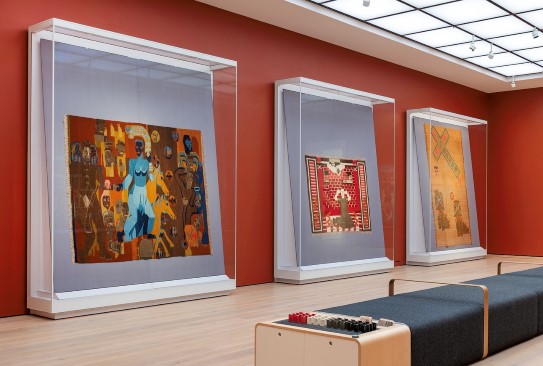What am I to fight with?
Hannah Ryggen
Transcription
Narrator
In the 1930s, the textile artist Hannah Ryggen sat at home in Ørlandet in the county of Trøndelag, on the coast of central Norway, weaving large tapestries in response to the horrors of the interwar years, explains Øystein Ustvedt, a curator at the National Museum.
Øystein Ustvedt
Throughout the 1930s, things generally took a disastrous turn in Europe, and really in the rest of the world too. At her home in Ørlandet, Hannah Ryggen is a keen newspaper reader – she subscribes to several papers – and reads about current events. Often there are horrific photographs, close-ups of bomb craters with small children, dead children with open mouths and staring eyes, really hard-hitting war reporting, which the world hasn't seen before.
In many ways she has a real anger about the world, about injustice. And the way I experience her works it that she used tapestry as a kind of weapon. It was her way partly of defending herself, and partly of launching an attack on the world. And each and every one of us has to find our own weapon – no one is exempt. We are all human beings on the Earth, and each of us must find a way to deal with this.
Narrator
Ryggen was also interested in nature and her immediate surroundings.
Øystein Ustvedt
This is what makes this so fascinating, that she was also highly aware of her immediate surroundings, of plants, of ecology. She used plants to dye her own yarns, she used urine to get a blue colour, and so on. And so her desire to draw the world into her weaving manifests itself on several levels.
Narrator
Hannah Ryggen was a politically engaged artist who stood up for humanism. She was innovative and fearless, and she continues to inspire new generations of artists.